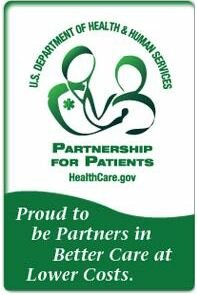 I am honored to be a patient advocate with the Patient and Family Engagement Network of the Partnership for Patients. The Partnership for Patients initiative is a public-private partnership working to improve the quality, safety and affordability of health care for all Americans, and I am very proud of its efforts to achieve its goal of 40% reduction in hospital acquired conditions and a 20% reduction in hospital readmissions compared to 2010.
I am honored to be a patient advocate with the Patient and Family Engagement Network of the Partnership for Patients. The Partnership for Patients initiative is a public-private partnership working to improve the quality, safety and affordability of health care for all Americans, and I am very proud of its efforts to achieve its goal of 40% reduction in hospital acquired conditions and a 20% reduction in hospital readmissions compared to 2010.
As patient advocates, our role with the Partnership is to encourage and support collaboration between healthcare providers and patients and families to improve healthcare and reduce cost. Along with other advocates, I posted to the National Patient Safety Foundation’s website blog to highlight Patient Safety Awareness Week 2014. In the words of fellow advocate Helen Haskell, ” Patient Safety Awareness Week has been an important symbol of hospital involvement in patient safety. It is not just about safety, but about awareness of all that patients can teach health care providers about themselves.”
Following is my blog celebrating the patient/provider partnership.
Patient Safety Awareness Week is a good time to celebrate the national movement toward patient-centered care. This week—which is dedicated to creating awareness and sharing educational resources about patient safety—reminded me of a recent health incident that led me into a fuller patient-centered care relationship with my health care providers.
Several months ago I had what started out as a minor health situation. But as time went on, I experienced a cascade of health complications that resulted in a not-so-minor situation. At my clinic visit, I asked my doctor the Ask Me 3 questions that the National Patient Safety Foundation suggests:
What is my main problem?
What do I need to do?
Why is it important for me to do this?
My doctor explained that I was nearing dehydration, and would need IV fluids if my condition continued to deteriorate. The thought of an IV infusion panicked me, and I asked for 24 hours before we began IV fluids.
As I chugged Gatorade, I tried not to think about the last time I had an IV infusion, which was during chemotherapy in 2000. The nurse reused syringes to access a mutidose saline bag. When a nurse used a syringe on a patient with known hepatitis C and then reused the same syringe to access the IV bag, the IV bag was contaminated. This happened multiple times during the day; in fact, it was found during an investigation by Nebraska Health and Human Services that after a day’s use, the bag was cloudy, pink, with bits of sediment. In this way, 99 Nebraskans contracted hepatitis C.
As I tried to rehydrate, I prepared myself mentally for an IV should I need one. Because of schedule conflicts, I would not have a loved one to advocate for me; I would advocate for myself. I knew that I wanted to continue the patient-centered care relationship that my health care providers and I had, believing it to be vitally important to improving the quality of health care and reducing costs at the same time. I reviewed materials on injection safety and What to ask Healthcare Providers. The website suggests that patients ask health care providers this question before an injection: “Will there be a new needle, new syringe, and new vial for this injection?” I knew that I would need to change the wording to “Will there be a new IV bag and new tubing for this infusion?” I even made a sign modeled after the One and Only Campaign logo to make my point.
I did not need to have the IV. If I had needed one, I would not have hesitated to have it, as I felt empowered and educated to be an equal partner with my health care providers.

